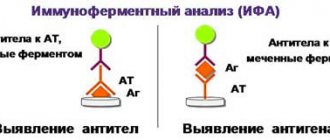09/23/2019 Reading time: 6 min 5572 0
- The main causes of regurgitation in children
- Pathological regurgitation
- How to distinguish regurgitation from vomiting
The most common cause of regurgitation is the structural features of the developing esophagus and stomach in a child in the first half of life, in particular weak muscles of the sphincter (valve) of the esophagus at the junction with the stomach. And the esophagus itself is relatively short and wide. The esophagus and stomach of a child at this age are compared to an “open bottle.”
Therefore, when overeating and (or) excessive air entering the stomach, when the child eats hastily and swallows air along with milk (or cries a lot before feeding), food from the stomach easily moves back into the oral cavity.
Regurgitation is observed, according to various sources, in 80–100% of infants under the age of 3 months. This is normal.
For example, American scientists estimate that regurgitation occurs in 100% of children aged 0 to 3 months, and in 20% of children it continues during the first year of life. In this case, the frequency of regurgitation after feeding ranges from 18 to 50%. In most children, regurgitation disappears or becomes much less frequent by the 4th–6th month of life.
Regurgitation, or regurgitation, is essentially the reflux of stomach contents into the pharynx, esophagus, and then into the oral cavity. Unlike vomiting, regurgitation is a passive process, that is, the muscles of the anterior abdominal wall, diaphragm and stomach are not involved in it. If a child spits up occasionally after feeding, this is normal and does not require special examinations, much less treatment.
It is important to understand two things. The first is how regurgitation (a natural process) differs from vomiting (can be a symptom of disorders in the body and diseases). The second is in what case even regurgitation is a reason to be wary. We'll talk about this below.
What is regurgitation?
During the neonatal period and the first months of a baby’s life, regurgitation is one of the most common functional disorders of the digestive system. According to clinical studies, approximately half of children in the first 3 months of life burp at least once a day. By the age of one year, the problem continues to occur in only 5% of infants. Regurgitation in a child is not the same as vomiting. The condition is a passive reflux of stomach contents into the esophagus and then into the pharynx and oral cavity. However, the amount of returned content may vary. During the process of regurgitation, the child does not make any effort, there is no special contraction of the muscles of the anterior abdominal wall, and the general condition of the baby is not disturbed.
Often, regurgitation in a baby is not a sign of illness and does not require specific treatment. However, this does not always happen, so parents should know the basic criteria for physiological regurgitation:
– occurs 1-2 times a day; – occurs immediately or almost immediately after feeding; – the volume of milk is small; – the child’s condition is not disturbed; – the baby’s appetite is not impaired; – the contents are free of any impurities; – before and after regurgitation, the child does not tense up or start crying; – The baby is gaining weight normally.
Over time, a healthy child burps less and less until the phenomenon completely disappears during the development of the baby, the formation of the digestive system and the introduction of complementary foods.
How to distinguish normality from pathology?
Doctors are calm about the fact that a child sometimes spits up a cheesy mass, because this phenomenon goes away on its own by about the 12th month of his life. Pathological regurgitation often does not require special therapy, except for changing the diet and controlling the amount of food eaten. Only sometimes are medications prescribed.
Drug treatment involves the following cases:
- At one time, the baby regurgitates more than 15 ml of liquid. Measuring the amount is easy - it fits in about two tablespoons.
- A child often spits up curdled milk not only after eating. This can happen after tantrums, but if the baby is calm, there should be no burping.
- Regurgitation is fountain-like.
Belching is usually observed immediately after eating. If the child behaves as usual, there is no reason to fear for his health.
For what reasons does a child spit up?
Risk factors for regurgitation in infants include both the anatomical features of the gastrointestinal tract and some external causes. These include: – differences in the structure of the baby’s esophagus (it is shorter) and the location of the stomach; – insufficient development of muscle structures, in particular sphincters, due to which food can easily flow back into the esophagus and higher; – slow evacuation of food from the stomach due to insufficient peristalsis; – increased intra-abdominal pressure due to tight swaddling, prolonged crying of the baby or gas formation; – incorrect technique of feeding a baby; – horizontal position of the child immediately after finishing feeding; – overfeeding the baby; - swallowing air during feeding due to nasal congestion, improper attachment to the breast, improper feeding of the bottle, or the presence of congenital anomalies in the oral cavity.
If the problem occurs after each feeding, the baby begins to gain weight worse, or the frequency of episodes gradually increases, then parents should consider visiting a doctor. If a child regularly spits up, he becomes more at risk of developing gastrointestinal diseases. Also, babies may refuse to feed, which gradually leads to malnutrition (weight deficiency). Due to constant irritation of the esophagus, an inflammatory process can form. The causes of pathological regurgitation (backflow) of stomach contents can be: – negative impact on the fetus in the prenatal period; – difficult childbirth, which results in birth trauma (damage to the spine, neck and other structures leading to disruption of nerve function); – hiatal hernia (congenital underdevelopment of the structures of the diaphragm); – congenital disorders of the central nervous system; – congenital relaxation of the sphincter between the stomach and esophagus (the muscle ring does not close completely, causing food to freely return to the esophagus); – intestinal obstruction in a child (a dangerous problem that requires immediate intervention).
Only a comprehensive examination will help accurately determine the cause of the problem. And treatment should be aimed at eliminating it. Therefore, if parents are concerned about the child’s condition, they should not delay a visit to the doctor.
Causes of vomiting in infants
Vomiting is a rather complex reflex process. It is directly dependent on overexcitation of the vomiting center or the vagus nerve. Most often, vomiting is accompanied by sharp and frequent spasms. Unlike regurgitation, the volume of substances released will be too large. The fact is that when vomiting, the contents of not so much the stomach, but rather the contents of the upper intestines, begin to protrude from the baby’s mouth, and often from the nose. This is the main indicator of how to distinguish vomiting from regurgitation. In infants, the reasons for this phenomenon can be very diverse. Most often, vomiting is associated with intoxication of the body as a whole or some pathology of the internal organs.
Here are some possible reasons for vomiting:
- pneumonia;
- concussion;
- poisoning;
- respiratory tract infection;
- appendicitis;
- otitis media;
- urinary tract infection;
- meningitis;
- sepsis;
- change in intracranial pressure;
- pyloric stenosis;
- abdominal trauma;
- intestinal obstruction;
- diabetic ketoacidosis;
- gastroenteritis;
- strangulated hernia;
- metabolic disease;
- hydrocephalus;
- other ailments.
There can be many reasons, this is not a complete list. It is important to remember one thing here - a healthy child cannot vomit. Therefore, at the slightest suspicion, the child simply needs to be urgently shown to the pediatrician.
Is it possible to reduce the risk of spitting up in a baby?
Since regurgitation is partially associated with the anatomical and physiological features of the structure of the child’s digestive system, it may not be possible to completely get rid of it. However, parents can follow simple rules that will reduce the likelihood of symptoms occurring: – Correctly attaching the baby to the breast so that he does not swallow air while eating. – Upright or semi-sitting position of the baby immediately after feeding. You can carry your baby in a column for 15-20 minutes. – Refusal of tight swaddling (not only due to the increased risk of regurgitation, but also due to the fact that restricting the baby’s movements has a negative impact on overall health). – Correct selection of artificial formula and bottles for it (if for a number of reasons a child is transferred to artificial feeding, then this must be done together with a doctor). – Before feeding, you can place it on the tummy. – Try to place the baby on only one breast at a time and accurately calculate the amount of formula if we are talking about artificial feeding. – If a child has a runny nose, then before feeding, rinse and cleanse the nose so that the baby can breathe freely. – After feeding, you should not immediately carry out active games with the baby or gymnastics, so as not to provoke muscle tension and reverse flow of stomach contents.
Technique for properly attaching your baby to the breast
Very often, a child spits up because he swallows air during feeding, which is associated with improper attachment to the breast. Signs that the mother is following all the necessary rules: – The baby’s mouth should be wide open and the nose slightly pressed to the chest. If your baby doesn't open his mouth enough, you can help him by lightly pressing his chin. – There is no free space in the corners of the baby’s mouth. When a baby wraps his mouth around a nipple, he creates a kind of vacuum. Moreover, the baby captures not only the nipple itself, but also the areola: mostly the lower part, but also the upper one too. – While suckling milk, the mother does not hear smacking sounds.
As for artificial feeding, it is important to choose the right bottle so that its opening is not too wide for the baby. It is also impossible to expand it artificially, so that the physiological process of feeding is respected.
Anomalies of the gastrointestinal tract
This is a rarer reason.
Regurgitation occurs due to various organic lesions, which are a complication of abnormalities in the structure of organs.
Only a highly qualified specialist will help to accurately establish the pathology.
What diseases cause regurgitation?
- Chalazia cardia (or obstruction of the lower sphincter in the esophagus). The anomaly entails constant reflux in the gastrointestinal tract (reverse movement). The main symptom of the disease is frequent regurgitation and vomiting.
- Pylorospasm. When the disease occurs, a spasm of the pylorus occurs, a muscle that is located between the stomach and intestines. Regurgitation can occur immediately after feeding or after a few minutes.
- Pyloric stenosis is a congenital defect of the pylorus (narrowing, thickening). The muscle resembles a dense lump that prevents the free penetration of food into the small intestine.
Alarming symptoms
Although regurgitation after feeding in young children is considered a physiological phenomenon, parents should still carefully assess the baby’s condition in order to promptly notice alarming symptoms. You need to worry and show the child to a specialist as soon as possible if the following manifestations of pathology are present: – frequent and profuse regurgitation (with each feeding to the breast, half or almost the entire amount of food); – the baby burps an hour or more after feeding; – blood in milk or formula; – an admixture of bile in regurgitated milk or formula; – weight loss in a child (babies should gain about 800 grams monthly in the first six months); – the baby is restless, irritable, sleeps and eats poorly; – any changes in stool (constipation, blood in stool, change in color); – bloating; – increase in body temperature; – signs of problems with the nervous system (convulsive activity, tremors of the limbs, lethargy and apathy). In such situations, you should not delay visiting a doctor, as the child’s condition may worsen.
Treatment at the Rehabilitation Medicine Clinic “Quality of Life”
Despite the fact that regurgitation in a child is considered a physiological phenomenon in most cases, the situation still causes concern for many parents. Only a qualified specialist can fully assess the baby’s condition. The clinic for restorative medicine “Quality of Life” employs experienced osteopathic and physical therapy doctors, as well as psychologists and a pediatric neurologist. You can bring your baby to an appointment from the newborn period, even if his condition does not cause concern. Our doctors will conduct a comprehensive examination and will be able to identify the consequences of the negative influences of the prenatal period, trauma during the birth of the baby, and will provide effective, timely assistance even before these problems cause adverse consequences, for example, in the form of regurgitation.
A preventive examination by clinic specialists is recommended for all children of any age. This will allow you to respond to any pathological changes in the body even before they manifest themselves symptomatically and cause complications. Features of the appointment at the clinic:
– An individual treatment plan is developed only after a comprehensive examination and often includes several specialists at once. This allows you to influence the child’s body from all sides and improve its functioning as a whole.
– Osteopathic techniques do not involve the use of drugs or surgical procedures, which makes them safe even for newborn babies. The clinic uses only techniques with clinically proven effectiveness.
– The clinic’s doctors take all necessary measures to ensure that the appointments are comfortable for the baby and without fear of treatment. If necessary, doctors agree not to undress the baby or place him on the table.
– All clinic staff are qualified doctors who understand that osteopathic care is not a panacea for all diseases and has contraindications. – The work of osteopathic doctors and exercise therapy is not only in treatment, but also in carrying out preventive measures. This helps reduce the risk of health problems in the future, strengthen the body, and promote harmonious and active physical and psychomotor development.
Doctors at the Quality of Life clinic are always ready to see the youngest patients to help restore and maintain their health using safe and effective techniques.
Similar articles:
- Directions
- Specialists
- For visitors
- Articles and videos
ONLY UNTIL January 31st!
20% DISCOUNT ON CLASSES ON THE REDCORD SUSPENSION SYSTEM
Classes are conducted by instructor-methodologist Osipova Maria.
REDCORD allows you to eliminate muscle imbalance by relaxing some muscles and stimulating others. This allows you to resume the motor pattern and return the patient to normal functioning!










